Characteristics of LED lamps: color temperature, power, light and others
LED lamps everywhere replace incandescent bulbs, because they are energy efficient and durable. But often, buyers bypass these “LEDs" side, because they can not understand their labeling.
The technical characteristics of LED lamps are more diverse - before it was enough to choose the power in Watts, and with new sources of artificial light, everything is somewhat more complicated. To choose the best option, you need to consider a number of parameters.
We will help you understand the characteristics of LED lights, explain the meaning of marking, and provide practical advice on choosing lamps for different rooms. The detailed information presented will be a valuable help in organizing comfortable lighting of an apartment, house or office.
The content of the article:
LED lamp specifications
To choose the right LED bulb, you need to study all its parameters. The light emitted by it differs from the more familiar incandescent light. Moreover, this luminous flux is far from being as uniform as before.
LEDs differ greatly in color shade (color temperature), scattering angle and other parameters of the emitted glow.
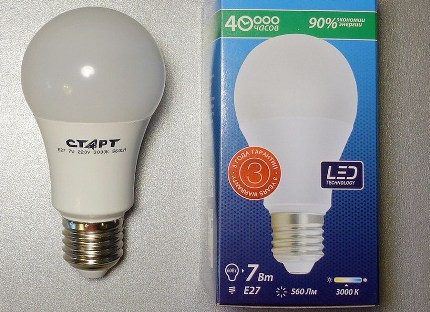
The abbreviation "LED" means an abbreviation for Light-Emitting Diode. This is the LED lamp for artificial lighting, which are sold in lighting stores. They are used in lighting fixtures installed both on the street and in various premises.
A single mandatory labeling for all LED lamps is not provided. Each manufacturer forms its own article. Of course, the main technical characteristics of the product are contained in it.
However, this is often done in the form of abbreviations, which are not so easy to understand.Moreover, a number of parameters are indicated only on the box from under the bulb.
All this must be taken into account when choosing LED. LED lamps for each room and lighting zone are recommended to be selected individually. In this matter, not only color temperature is important, but also other characteristics of the LED lamp, and it has a lot of parameters.
Color temperature and hue
On the packaging of each LED lamp, the color temperature indicator is always in the most visible place. This is the main characteristic of this lighting fixture.
If in ordinary bulbs with an incandescent filament made of tungsten, the color of light is in a narrow range of 2200–2800 K, then for LEDs it fluctuates in a much wider range.
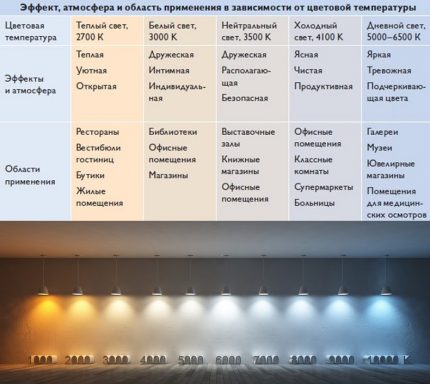
This indicator does not correlate with the temperature of the surface of the LED light bulb and its radiated heat. At maximum, the LED can heat up to 60–65°C. For comparison, the analogue with an incandescent filament per 100 W is heated up to 250–265 ° С.
Almost all of the electricity in the LED is converted to light. And no matter what color spectrum it belongs to, the temperature of surface heating will always be approximately the same.
All LED bulbs by color temperature (color of light) is usually divided into three groups:
- WW (Warm White) - “warm white” with a radiation spectrum of 2700–3300 K;
- NW (Neutral White) - “natural white” with a range of 3300–5000 K;
- CW (Cool White) - “cold white” with light emission> 5000 K.
According to human perception, the first option approximately corresponds to the illumination in the street from the sun at the horizon. The second is sunlight at lunchtime in clear weather. The third one at the beginning of the range coincides with the radiance of the sun at its zenith, and when going to 6500–7500 K it is equal to natural daylight when it is cloudy.
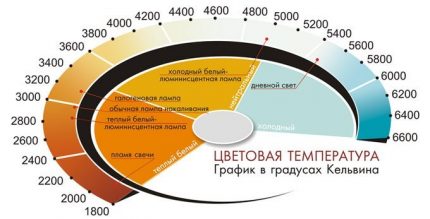
Choosing the color of the light, you need to focus on where subsequently the lamps will be used. Warm yellow shades are more suitable for bedrooms, and whites of a natural or cold spectrum are more suitable for a corridor or kitchen.
The right choice of LEDs is a science. And the main thing here is to build on the room itself. An incorrectly selected LED bulb can greatly damage a person’s eyesight.
Lighting designers have to take into account not only the color of the LED, but also the brightness with the color rendering of the light source. At the same time, the influence of the created lighting on people's perception plays an important role.
When a person enters a room from the street, the human eye has to quickly adapt to the changing light. Often the colors of objects in the first minutes even seem distorted and incorrect.
The degree of color rendering of LED lamps
The second most important indicator of the light of an LED lamp is the color rendering index, indicated on the CRI or Ra marking. This indicator is responsible for the naturalness of the transmission of all shades of color from an object that falls into the beam of a lighting device.
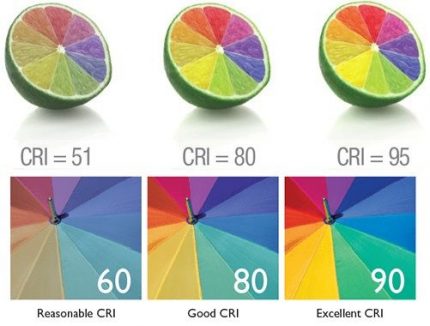
If Ra <80, then objects in the lighted LED room will visually appear dull. It should be understood that the perception of colors is individual for each person. Plus, with age, its distortion also occurs.
For the standard Ra = 100, it is customary to take undistorted color reproduction, which is formed when the object is illuminated by the sun.That is, as we usually see it on the street with bright natural, rather than artificial indoor lighting.
The color rendering index of LED lamps can conditionally be divided into four classes:
- 100 - maximum, which is equivalent to the perception of color in natural light;
- from 100 to 90 - such bulbs are designed for places where the most accurate color reproduction is required (laboratories, workstations and areas);
- from 90 to 80 - options for ordinary living rooms and general lighting;
- below 80 - lamps in the fixtures for corridors, toilets and utility rooms, where high quality transmission of shades is not so important.
There is no direct connection between color rendition and color temperature. These are independent from each other characteristics of an LED lamp.
Scattering angle and luminosity
One of the advantages of LED lamps over conventional ones is the narrow focus of the light flux. By itself, one LED forms a light beam only directly in the direction from its housing.
Usually several pieces or an entire array are inserted in an LED bulb to create a specific cone of light. Is the same incandescent light bulbOn the contrary, it shines immediately in all directions in a circular fashion.
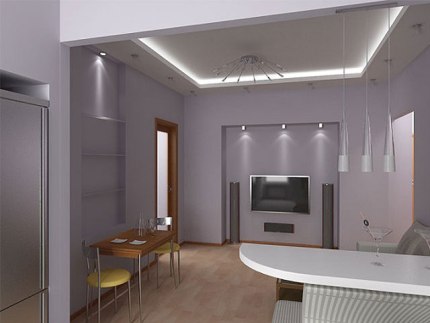
The luminous flux of LED bulbs can be scattered at an angle from 60 to 340 °. Narrowly targeted options are used to organize oriented spot lighting and to illuminate specific areas in the interior. Wide angle lamps are designed for general ceiling lighting.
The luminous intensity (light output) reflects the radiation efficiency of the LED lamp. This characteristic is measured in lm / W. The value in lumens (lm) is the value of the luminous flux, and Watts is the power of the bulb. In the marking, they are indicated together with a single digit in lm / W or separately.
The higher this indicator, the more energy-efficient and economical LED lamp. On the other hand, the greater the value of the luminous flux of a particular bulb, the less such products will be required to illuminate the room.
Design: base and flask
Structurally, the LED lamp consists of:
- printed circuit board with a driver for converting an alternating current to a constant current;
- light source - one or more LEDs;
- diffuser flasks designed for uniform light scattering;
- base and housing.
Plus, there is a small radiator inside that dissipates the thermal energy generated during the glow of the LED crystal. Although it forms a little, but it is still there.
Of all these elements, the buyer’s interest in the LED lamp may be the shape of the bulb cap type. The remaining details are not even described in the marking and data sheet of such bulbs.
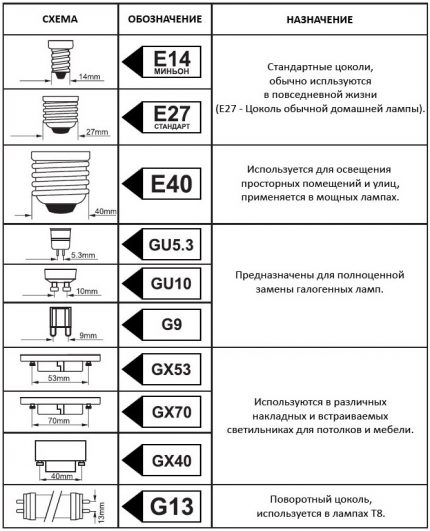
Most often, at home, LED lamps are used with standard threaded sockets.
They have the letter “E” in their designation and a number indicating the size of the diameter. Typical option - base E27, similar to a conventional household lamp with a filament of 60, 80 or 100 watts.
In homes, you can also find light bulbs with base minion E14 ("Candles" for sconces).

Models with pin cap G or GU are designed to replace halogen analogues. And the GX is a small flat lamp for recessed lighting. They are mounted on the walls of furniture and ceilings.
The execution of the case also varies in IP degree of protection. In dry rooms without any particular dust (for example, corridors and bedroom apartments) IP20 or IP21 is enough. For installation in kitchens, bathrooms or garages, the lamp should be selected with IP56 and higher. And for the street, only models with a minimum of IP65 are suitable.
Power and power settings
The LED is powered by a constant voltage of 12-24 volts. So that the LED bulb can be screwed into a 220 V lamp, its housing has the necessary transformer. For LED strips, this converter is an external device. For lamps, it is already built into the base.
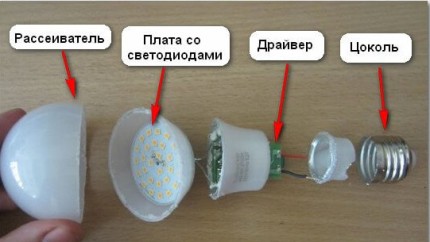
In incandescent lamps, the brightness of the glow and the power consumption are directly connected. The higher the first indicator, the higher the second.
With LED analogs, the situation is somewhat different. Here, the brightness is determined by the characteristics of the LEDs installed inside and their number. At the same power, different LED lamps can vary greatly in luminosity and color temperature.
LED selection for different rooms
The least tired are the vision of a lamp with natural white light. However, for residential premises it is still recommended to select LEDs with a soft yellow tint of glow. Artificial light from them is more comfortable with prolonged exposure to the eyes. Bright room lights sooner or later begin to annoy.
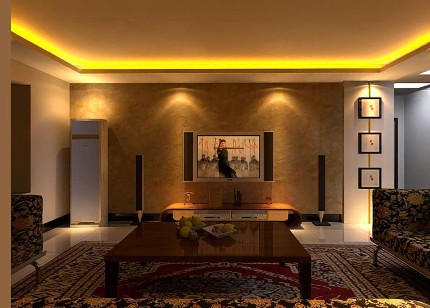
Lamps with cool blue shades are more suitable for offices. There, the “vigor” generated by them, vigor and concentration will be most welcome. But in the bedroom and the nursery such options are definitely not worth installing.
Another point is the ripple of the LED bulbs. If the board with the transformer for LED is designed unprofessionally, the lamp will pulsate. This is the result of its AC power supply.
In the vast majority of cases, this is even invisible to the naked eye. However, this constant pulsation has its negative effect on vision and the brain. When buying LED lamps, you should not chase excessive cheapness.
It is at this point that many negligent manufacturers and save, then creating problems for consumers with well-being.
The manufacturer will also play an important role in choosing diode bulbs. We have prepared a series of review articles about LED lamps from different manufacturers.
We advise you to familiarize yourself with:
- ASD LED bulbs: product line overview + selection tips and reviews
- LED lamps "Era": reviews about the manufacturer + a brief overview of the model range
- Osram LED lamps: reviews, advantages and disadvantages, comparison with other manufacturers
- LED bulbs & # 8220; Gauss & # 8221 ;: reviews, an overview of the advantages and disadvantages of the manufacturer
Conclusions and useful video on the topic
To make it easier for you to understand how to choose an LED lamp, we made a video compilation with reviews from different manufacturers and a detailed description of their work.
Comparison of different models of LED lamps:
Description of LED characteristics in full detail:
How are LED bulbs designed for household lighting:
When choosing an LED lamp for a household lighting fixture, all its parameters and technical characteristics must be taken into account. There are a lot of them, but the time spent will definitely pay off. And not so much with money as with the well-being and comfort of households.
Have something to supplement, or have questions about choosing LED lamps? You can leave comments on the publication, participate in discussions and share your own experience in using such lamps. The contact form is located in the lower block.

 What is the color temperature of light and the nuances of choosing the temperature of the lamps to suit your needs
What is the color temperature of light and the nuances of choosing the temperature of the lamps to suit your needs 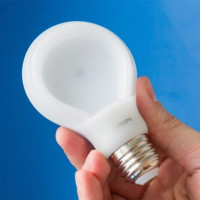 Philips LED lamp overview: types and characteristics, advantages and disadvantages + consumer reviews
Philips LED lamp overview: types and characteristics, advantages and disadvantages + consumer reviews 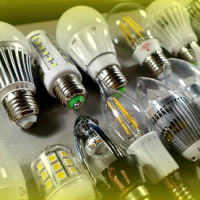 LED lamp bases: types, marking, technical parameters + how to choose the right one
LED lamp bases: types, marking, technical parameters + how to choose the right one 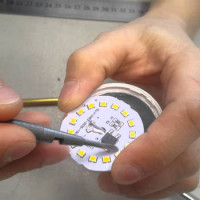 DIY LED lamp repair: the causes of breakdowns, when and how you can repair it yourself
DIY LED lamp repair: the causes of breakdowns, when and how you can repair it yourself 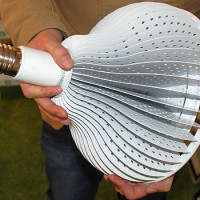 LED lamp E40: device, characteristics, scope
LED lamp E40: device, characteristics, scope 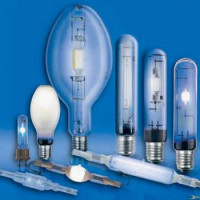 Mercury lamps: types, characteristics + an overview of the best models of mercury-containing lamps
Mercury lamps: types, characteristics + an overview of the best models of mercury-containing lamps  How much does it cost to connect gas to a private house: the price of organizing gas supply
How much does it cost to connect gas to a private house: the price of organizing gas supply  The best washing machines with dryer: model rating and customer tips
The best washing machines with dryer: model rating and customer tips  Replacement of a geyser in an apartment: replacement paperwork + basic norms and requirements
Replacement of a geyser in an apartment: replacement paperwork + basic norms and requirements
I discovered the charm of LED lamps for myself recently. As if I heard that there are some energy-saving light bulbs, but not about these, but about fluorescent ones. I thought that such bulbs are used only in flashlights, etc. It turns out they find application in everyday life. This is a huge saving plus great lighting. For example, I often work in the dark, the light is on at night to fly. Incandescent bulbs changed every 1.5-2 weeks. While the LED has a lifespan of several years. I now have a light bulb in my room that consumes 10W and burns brighter than incandescent 60W.
I want to say that as soon as such lamps entered the general market, I immediately bought myself. Changed all the old incandescent bulbs. Before purchasing, pay attention to their characteristics, as they differ in color temperature, lamp power and light scattering. The luminous flux of such lamps can generally be scattered from 60 to 340 degrees. So, the choice has become great compared to those that we used to use.
Just a month ago, I changed a couple of blown diode lamps. Honestly, I like everything about them - and the savings and cost are gradually reduced. But they have one jamb - they depend too much on the fluctuations of electricity in the wiring. It is because of this that their service life is shorter than the manufacturer claims. At least for me. The manufacturer claims about 50,000 hours of continuous operation, and this for a second is more than 5.5 years. They live with me for a year or two at best. But even under such conditions, their benefit is on the face.